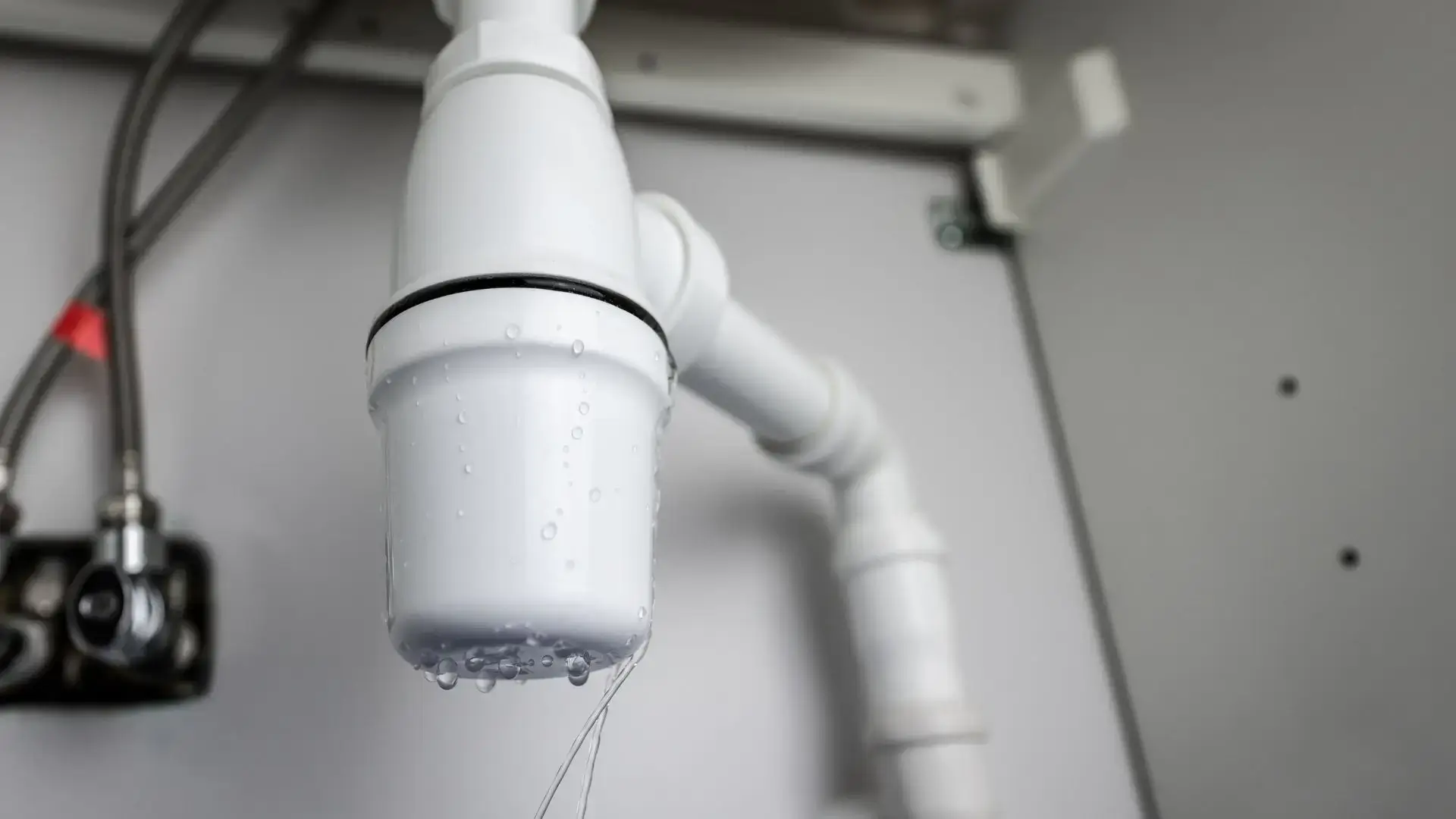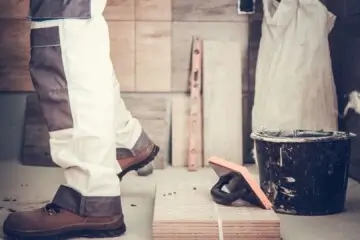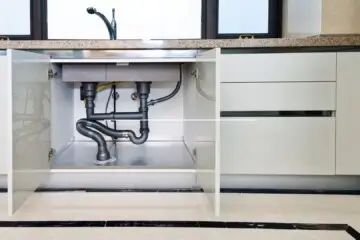If you notice a leaking pipe under the sink, the first step is to turn off the water supply to prevent further damage. Locate the shut-off valves usually located beneath the sink and turn them clockwise to stop the water flow. Next, carefully examine the leaking pipe to identify any loose fittings or cracks. For minor leaks, you can apply sealant, but for significant damage, you may need to replace the section of the pipe. Ensure all connections are securely tightened to prevent future leaks. Once you have fixed the issue, turn the water supply back on and check for any remaining leaks. Acting promptly can help prevent water damage. For more tips on handling plumbing problems, continue exploring.
Contact CAN Plumbing and Drainage for all your Pipe Needs
When you encounter a leaking pipe under your sink, reach out to CAN Plumbing and Drainage in Mississauga for comprehensive pipe solutions. A leaky pipe can result in significant water damage if left unattended. Our team of skilled plumbers in Mississauga specializes in repairing leaks and ensuring secure pipe connections to prevent future issues. It’s crucial to contact a plumber at the first sign of a leaking pipe to avoid costly repairs and potential water damage to your home. CAN Plumbing and Drainage in Mississauga is committed to delivering efficient and dependable services to address any plumbing issues you may have. Contact us to promptly and effectively fix a leak, safeguarding the integrity of your plumbing system.

CAN Plumbing and Drainage Services Related to Pipes
At CAN Plumbing and Drainage in Mississauga, our expertise lies in tackling common pipe issues like frozen pipes and clogged pipes. Frozen pipes can result in bursting and significant water damage, while clogged pipes can lead to backups and slow drainage. Rest assured, our team is well-prepared to address these challenges promptly and efficiently to ensure optimal functioning of your plumbing system.
Frozen Pipes
Inspecting your pipes for signs of freezing is essential to prevent costly damage and disruptions to your plumbing system. When temperatures decrease, water trapped inside pipes can freeze, leading to expansion and potential bursting. To avoid frozen pipes, it’s crucial to insulate any exposed pipes, especially those in unheated areas such as basements or attics. Use heat tape or heating cables around the pipes to maintain warmth. Seal any leaks or cracks that could expose the pipes to cold air. If you suspect a frozen pipe, keep the faucet open to allow water to flow once it thaws. Taking proactive steps to prevent frozen pipes can help you avoid the inconvenience and expense of dealing with a burst pipe.

Clogged Pipes
When dealing with a clogged pipe, our plumbing and drainage services focus on thorough inspections and targeted solutions to restore ideal water flow. When addressing a bathroom sink drain pipe, identifying the cause of the slow leak is crucial. Fixing a leaky or clogged pipe may involve using plumbers putty to seal joints or tightening connections. Sometimes, hair, soap scum, or debris can accumulate in the drain pipe, leading to blockages. Our team specializes in efficiently clearing these obstructions, ensuring water can flow freely again. Additionally, we tackle issues like pipe sticking due to mineral buildup or corrosion, providing lasting solutions to keep your pipes clear and functioning optimally. Trust our expertise to promptly and effectively resolve clogged pipe problems.

Turn off the Water Supply
Upon identifying the leaking pipe under the sink, the first crucial step is to promptly locate and turn off the water supply to prevent further damage. This can be done by finding the shut-off valves typically situated beneath the sink and turning them clockwise to stop the water flow. In case there are no individual shut-off valves, you may need to turn off the main water supply to the house. This step is vital as it prevents water from continuing to leak out of the pipe, causing more damage and potential flooding. Once the water is turned off, you can proceed with fixing the leak by disassembling the affected area, applying plumbers tape, tightening connections, or replacing the p-trap if necessary.
Fix the Leaking Pipe
After identifying the leaking pipe under the sink, our next step involves evaluating the extent of the damage and determining the appropriate method to fix the issue efficiently. First, confirm the water supply is still turned off. Then, using a wrench, carefully inspect the leaking pipe to identify the source of the problem. Common issues include loose fittings, cracks, or corrosion. Once the problem is pinpointed, proceed with the necessary repairs. If it’s a minor leak, applying a sealant may suffice; however, for more significant damage, consider replacing a section of the pipe. Make sure to securely fasten all connections to prevent future leaks. After completing the repair, turn the water supply back on and check for any remaining leaks.
Test for Leaks and Clean up
We will now inspect the fixed pipe for any leaks and proceed to clean up the area under the sink. To check for leaks, turn on your faucet clockwise and let the water flow through the pipes. Watch closely for any indications of water dripping or gathering that could suggest a leak is originating from the repaired area. If you detect any leaks, tighten the connections further or reapply sealant as needed. Once you verify that there are no leaks, it’s time to tidy up the space under the sink. Wipe down any excess water with a dry cloth and ensure the area is completely dry to prevent any future issues. Congratulations on successfully repairing the leaking pipe!
Identify the Source of the Leak
To locate the source of the leak, carefully examine the pipes and connections beneath the sink for any indications of dripping water or moisture buildup. Inspect the pipes for visible cracks, loose fittings, or signs of corrosion. Use a flashlight if necessary to get a clear view of the entire area. Check around the sink basin, drain, and water supply lines for any water pooling or damp spots. If the leak is originating from a specific joint or connection, you may need to apply putty or silicone to effectively seal the area. It is crucial to pinpoint the exact location of the leaking pipe before proceeding with any repairs to ensure that the fix addresses the root cause of the problem.

Gather Necessary Tools and Materials
Gather the necessary tools and materials required for fixing the leaking pipe under the sink. You will need a clamp to secure the pipe, epoxy putty or silicone tape for temporary fixes, and a wrench to tighten any loose nuts. Make sure you have spare nuts, washers, and pipes in case replacements are necessary. Start by shutting off the water supply to the sink to prevent further leakage. Place a bucket under the sink drain to catch any remaining water. Carefully inspect the area to determine the extent of the damage before beginning repairs. Having these tools and materials ready will make the repair process smoother and more efficient, helping you stop the leak promptly.
Frequently Asked Questions About Sink Leaking Near Me
How Can I Prevent Pipes From Leaking in the Future?
To prevent pipes from leaking in the future, it’s important to regularly inspect connections, ensure proper fittings, and monitor water pressure. Be sure to promptly repair any signs of wear, corrosion, or damage. By maintaining good plumbing practices and addressing issues promptly, you can prevent leaks from occurring.
Are There Any Temporary Fixes I Can Use if I Can't Immediately Repair the Leaking Pipe?
If immediate repair of the leaking pipe is not possible, consider using pipe repair tape or a pipe clamp as temporary solutions. These quick fixes can help stop the leakage until a permanent repair can be performed.
Can I Use Any Household Items to Fix a Leaking Pipe Under the Sink?
Yes, you can use household items like plumbers tape, epoxy putty, or a rubber pad and clamp to temporarily fix a leaking pipe under the sink. These items can provide a quick solution until proper repairs can be made.
How Do I Know if the Leaking Pipe Has Caused Damage to Other Parts of the Plumbing System?
To determine if a leaking pipe has caused damage to other parts of the plumbing system, we need to look for water stains, mold growth, musty odors, low water pressure, or unusually high water bills. If any of these signs are present, it is important to address the underlying issues promptly.
Is It Safe to Use the Sink or Water in the Affected Area While Waiting to Fix the Leaking Pipe?
It is safe to use the sink or water in the affected area while waiting to fix the leaking pipe. However, it is important to exercise caution to avoid worsening the leak and to monitor the situation for any changes.
Please rate our website
Let us improve this post!
Tell us how we can improve this post?


